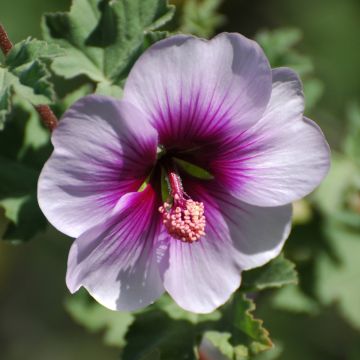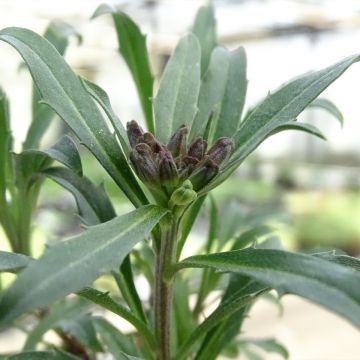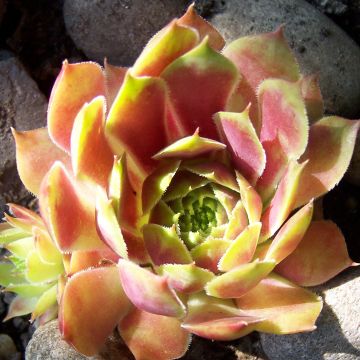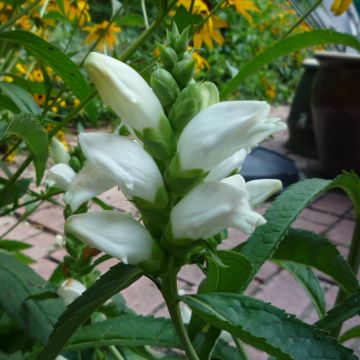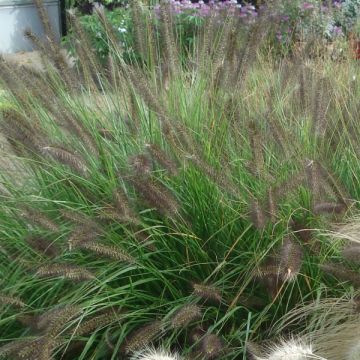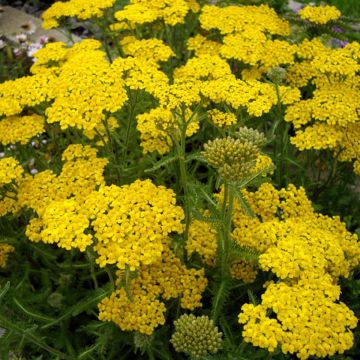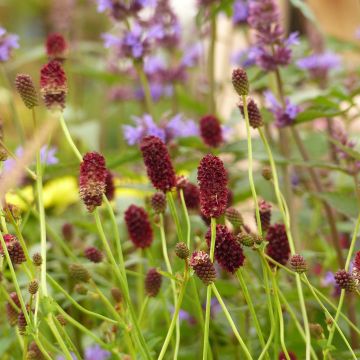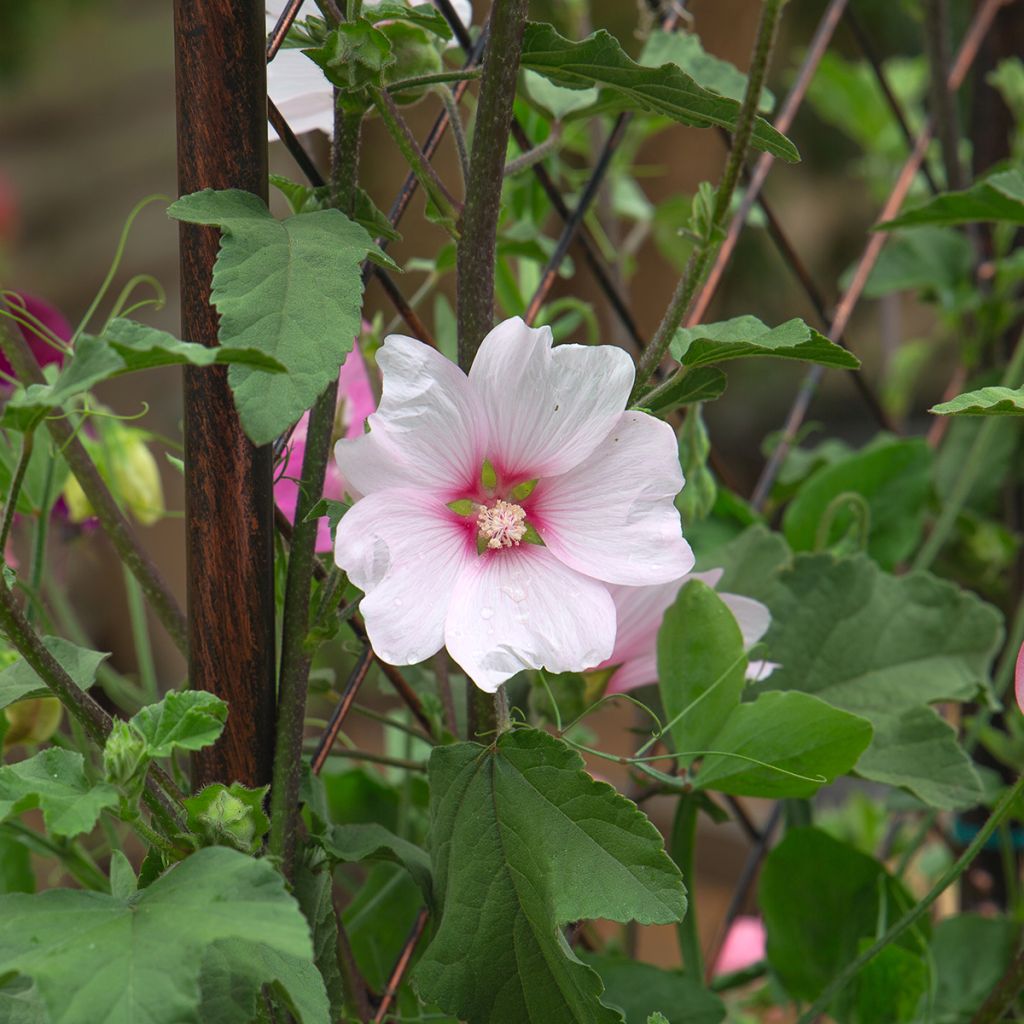

Lavatera clementii Barnsley - Tree Mallow
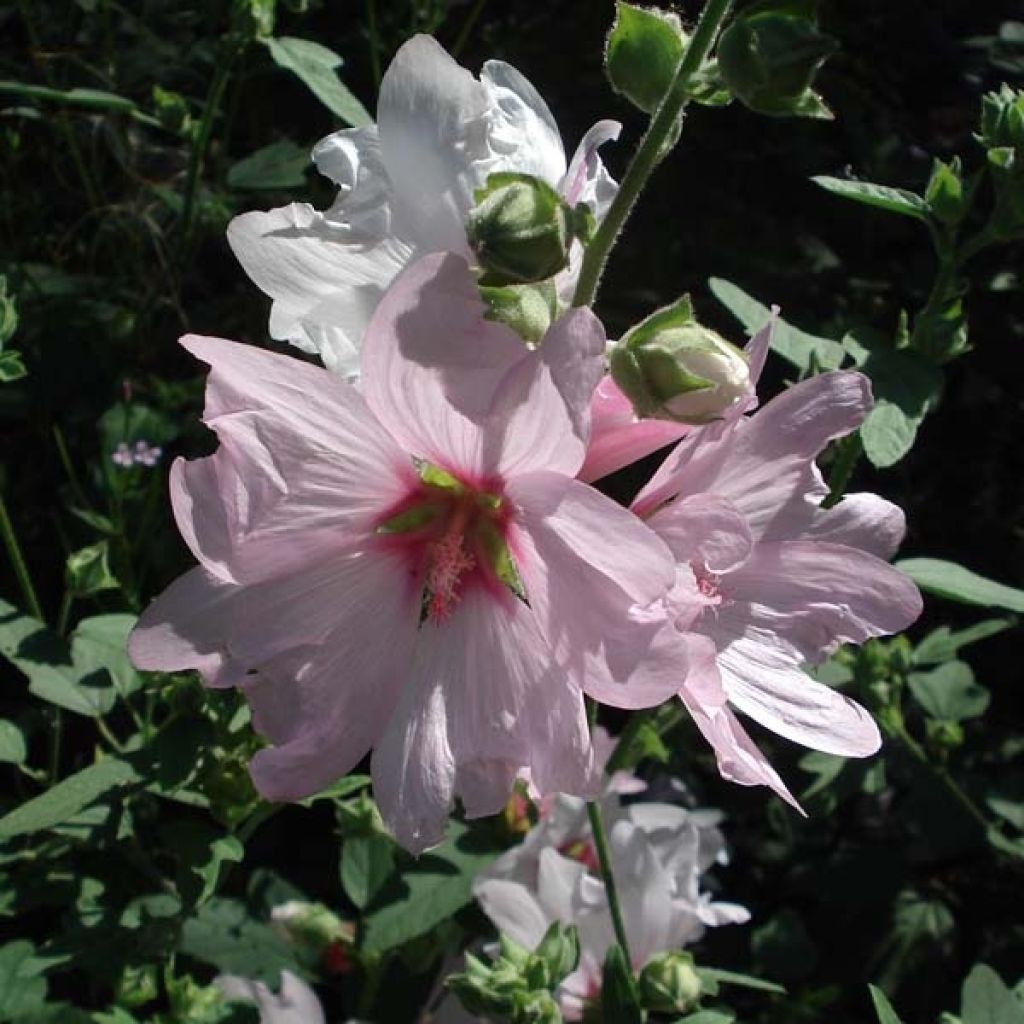

Lavatera clementii Barnsley - Tree Mallow
Lavatera clementii Barnsley - Tree Mallow
Lavatera x clementii Barnsley
Tree Mallow, Clement's Mallow
The "Barnsley Lavatera" does not match the description provided; it is a bright pink lavatera, which I already have in abundance in my garden. I am very disappointed.
Catherine, 16/06/2025
Special offer!
Receive a €20 voucher for any order over €90 (excluding delivery costs, credit notes, and plastic-free options)!
1- Add your favorite plants to your cart.
2- Once you have reached €90, confirm your order (you can even choose the delivery date!).
3- As soon as your order is shipped, you will receive an email containing your voucher code, valid for 3 months (90 days).
Your voucher is unique and can only be used once, for any order with a minimum value of €20, excluding delivery costs.
Can be combined with other current offers, non-divisible and non-refundable.
Home or relay delivery (depending on size and destination)
Schedule delivery date,
and select date in basket
This plant carries a 12 months recovery warranty
More information
We guarantee the quality of our plants for a full growing cycle, and will replace at our expense any plant that fails to recover under normal climatic and planting conditions.

Would this plant suit my garden?
Set up your Plantfit profile →
Description
The Lavatera 'Barnsley' is a wonderful perennial shrub, as charming as it is generous, with flowers that range from white to pink around a more purplish heart, blooming during a very long summer to autumn period, even in poor, limestone and dry soils. The plant retains its foliage until the onset of winter and all year round in mild climates. In just two years, it can fill any perennial or shrub bed and adapts well to container gardening. Its generosity and charm more than make up for its limited lifespan and relative hardiness.
Lavateras belong to the large family of Malvaceae. It is a genus that includes many species, some more woody, and can be annual, biennial or perennial. They originate from various temperate regions around the world, but are mainly found in Mediterranean climates. Lavatera shrubs are generally quite short-lived, living only 3 or 4 years, sometimes longer when regularly pruned, but they easily multiply through propagation by cuttings.
The Lavatera 'Barnsley' is a vigorous shrub hybrid that was born a few years ago in the small village of Barnsley in England. The plant has a bushy and ramified habit, as wide as it is tall: it quickly reaches 1.50 m (5ft) in all directions, which can be adjusted depending on whether it is pruned more or less severely at the beginning of spring. This abundant and generous little shrub bears flowers that are 4-6 cm (2in) in diameter, composed of petals whose color evolves over time: white flowers with a red heart and pink flowers coexist on the same plant. These flowers are short-lived, but they constantly renew themselves from July to October. The foliage, more or less evergreen depending on the severity of winter, is composed of rounded palmately-lobed leaves, slightly fuzzy, 6 to 12 cm (2 to 5in) long, forming a very soft ensemble in a light green-gray tone. This lavatera is hardy down to -10°C in healthy and well-drained soil. Young plants tolerate frost better than mature ones.
Lavatera 'Barnsley' charms with its tender colors and generosity. It will be very beautiful in a bed of tall perennials or summer-flowering shrubs (dwarf Buddleias, Perovskia, Caryopteris). It also pairs well with white, pink or mauve bush roses, and the delicate flowers of white or red gauras. It is a full sun plant that also tolerates partial shade in hot climates, and shows a bit more longevity in well-drained soil. Its marriage with Sages, or even with its annual cousins Malopes (Malope 'Glacier Fruits Mixed') and Mallow is full of romance. By the seaside, it will retain its vegetation for most of the winter. It can also be grown in containers.
Report an error about the product description
Lavatera clementii Barnsley - Tree Mallow in pictures
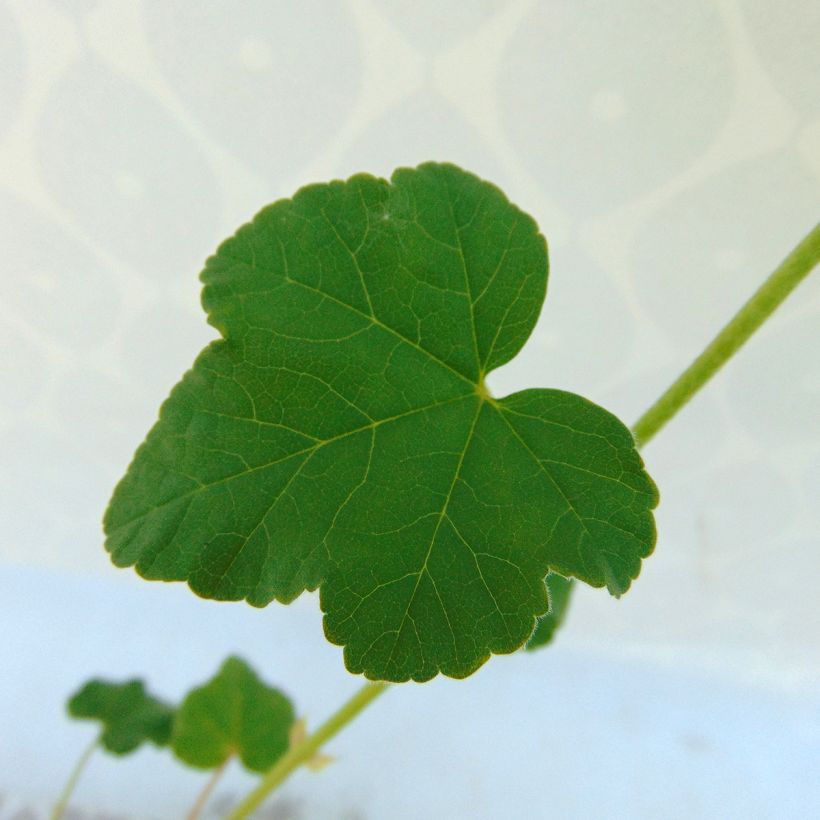

Flowering
Foliage
Plant habit
Botanical data
Lavatera
x clementii
Barnsley
Malvaceae
Tree Mallow, Clement's Mallow
Cultivar or hybrid
Other Lavatera - Tree Mallow
View all →Planting and care
Plant Lavateras in full sun (or in partial shade in the south) in any well-drained soil, even limestone. Once well-rooted, they withstand summer drought well. Protect them from cold, drying winds in cold regions. Feel free to cut flowers and make bouquets, pruning stimulates growth and makes plants stronger. At the beginning of winter, prune them to 50 cm (20in), above the first buds, and if the winter is very cold, mulch your plants. You can also give them a shaping prune in spring. These plants have a lifespan of 5 to 6 years. In large flowerbeds, renew one plant out of every three each year. Lavatera can be easily propagated by cuttings. Every year, as soon as the buds swell in March, leave only two or three buds at the base of the new shoots, to form a sturdy framework. Remove excess or poorly placed old wood. Lavatera can be prone to rust, root rot, and fungal infections from heavy soil.
Planting period
Intended location
Care
-
, onOrder confirmed
Reply from on Promesse de fleurs
Similar products
Haven't found what you were looking for?
Hardiness is the lowest winter temperature a plant can endure without suffering serious damage or even dying. However, hardiness is affected by location (a sheltered area, such as a patio), protection (winter cover) and soil type (hardiness is improved by well-drained soil).

Photo Sharing Terms & Conditions
In order to encourage gardeners to interact and share their experiences, Promesse de fleurs offers various media enabling content to be uploaded onto its Site - in particular via the ‘Photo sharing’ module.
The User agrees to refrain from:
- Posting any content that is illegal, prejudicial, insulting, racist, inciteful to hatred, revisionist, contrary to public decency, that infringes on privacy or on the privacy rights of third parties, in particular the publicity rights of persons and goods, intellectual property rights, or the right to privacy.
- Submitting content on behalf of a third party;
- Impersonate the identity of a third party and/or publish any personal information about a third party;
In general, the User undertakes to refrain from any unethical behaviour.
All Content (in particular text, comments, files, images, photos, videos, creative works, etc.), which may be subject to property or intellectual property rights, image or other private rights, shall remain the property of the User, subject to the limited rights granted by the terms of the licence granted by Promesse de fleurs as stated below. Users are at liberty to publish or not to publish such Content on the Site, notably via the ‘Photo Sharing’ facility, and accept that this Content shall be made public and freely accessible, notably on the Internet.
Users further acknowledge, undertake to have ,and guarantee that they hold all necessary rights and permissions to publish such material on the Site, in particular with regard to the legislation in force pertaining to any privacy, property, intellectual property, image, or contractual rights, or rights of any other nature. By publishing such Content on the Site, Users acknowledge accepting full liability as publishers of the Content within the meaning of the law, and grant Promesse de fleurs, free of charge, an inclusive, worldwide licence for the said Content for the entire duration of its publication, including all reproduction, representation, up/downloading, displaying, performing, transmission, and storage rights.
Users also grant permission for their name to be linked to the Content and accept that this link may not always be made available.
By engaging in posting material, Users consent to their Content becoming automatically accessible on the Internet, in particular on other sites and/or blogs and/or web pages of the Promesse de fleurs site, including in particular social pages and the Promesse de fleurs catalogue.
Users may secure the removal of entrusted content free of charge by issuing a simple request via our contact form.
The flowering period indicated on our website applies to countries and regions located in USDA zone 8 (France, the United Kingdom, Ireland, the Netherlands, etc.)
It will vary according to where you live:
- In zones 9 to 10 (Italy, Spain, Greece, etc.), flowering will occur about 2 to 4 weeks earlier.
- In zones 6 to 7 (Germany, Poland, Slovenia, and lower mountainous regions), flowering will be delayed by 2 to 3 weeks.
- In zone 5 (Central Europe, Scandinavia), blooming will be delayed by 3 to 5 weeks.
In temperate climates, pruning of spring-flowering shrubs (forsythia, spireas, etc.) should be done just after flowering.
Pruning of summer-flowering shrubs (Indian Lilac, Perovskia, etc.) can be done in winter or spring.
In cold regions as well as with frost-sensitive plants, avoid pruning too early when severe frosts may still occur.
The planting period indicated on our website applies to countries and regions located in USDA zone 8 (France, United Kingdom, Ireland, Netherlands).
It will vary according to where you live:
- In Mediterranean zones (Marseille, Madrid, Milan, etc.), autumn and winter are the best planting periods.
- In continental zones (Strasbourg, Munich, Vienna, etc.), delay planting by 2 to 3 weeks in spring and bring it forward by 2 to 4 weeks in autumn.
- In mountainous regions (the Alps, Pyrenees, Carpathians, etc.), it is best to plant in late spring (May-June) or late summer (August-September).
The harvesting period indicated on our website applies to countries and regions in USDA zone 8 (France, England, Ireland, the Netherlands).
In colder areas (Scandinavia, Poland, Austria...) fruit and vegetable harvests are likely to be delayed by 3-4 weeks.
In warmer areas (Italy, Spain, Greece, etc.), harvesting will probably take place earlier, depending on weather conditions.
The sowing periods indicated on our website apply to countries and regions within USDA Zone 8 (France, UK, Ireland, Netherlands).
In colder areas (Scandinavia, Poland, Austria...), delay any outdoor sowing by 3-4 weeks, or sow under glass.
In warmer climes (Italy, Spain, Greece, etc.), bring outdoor sowing forward by a few weeks.






























